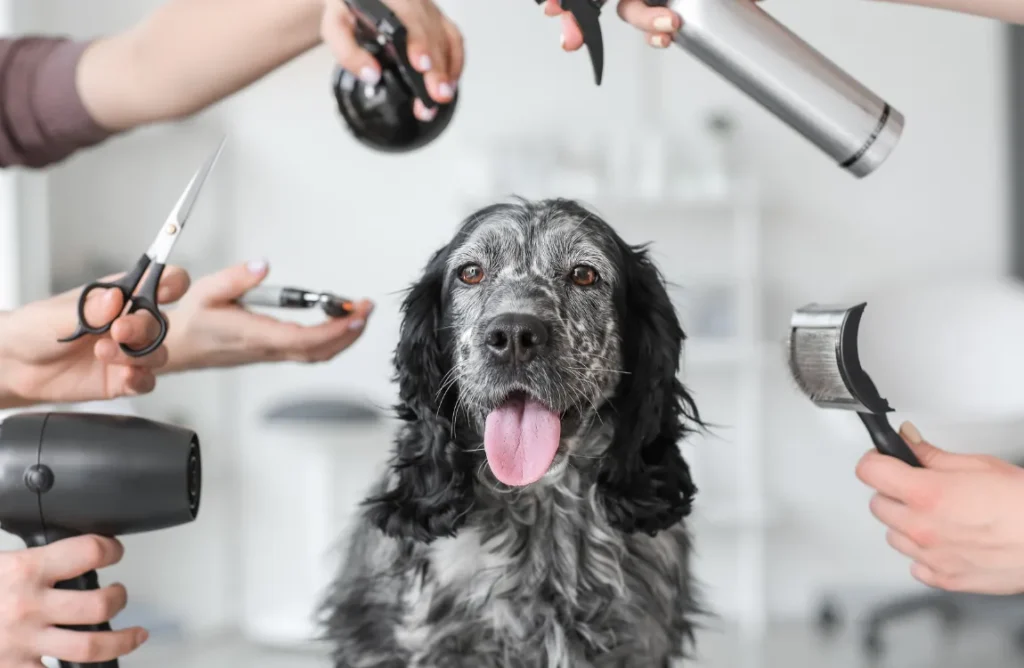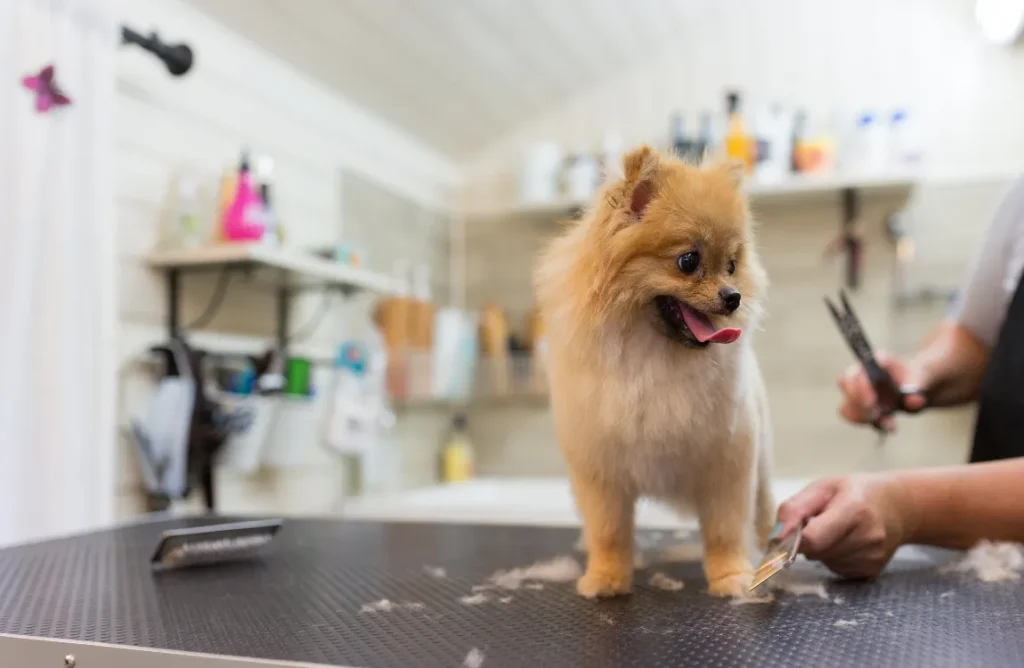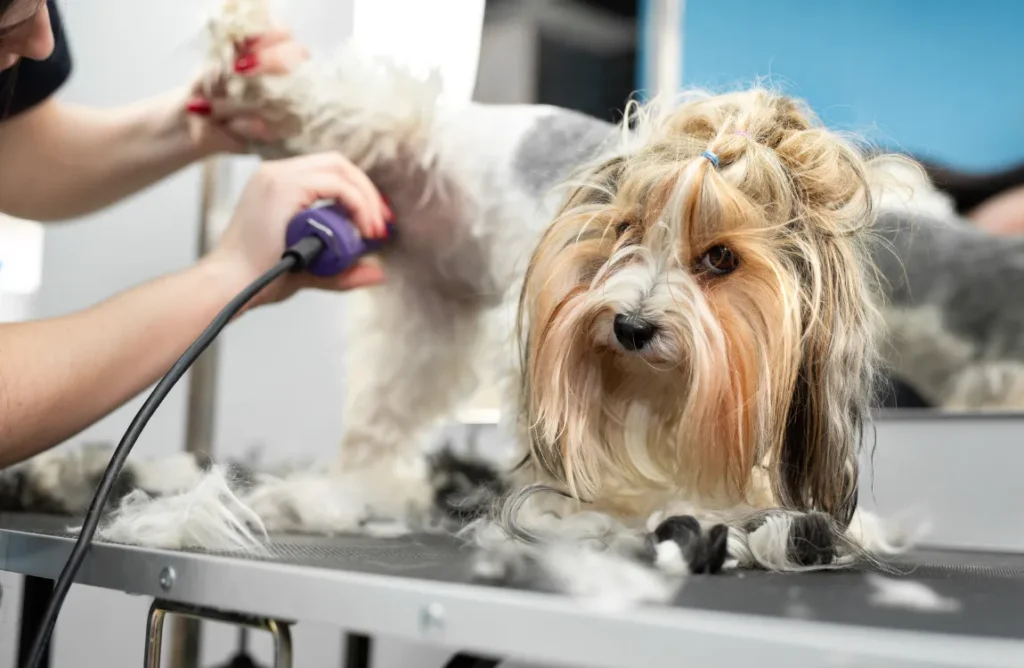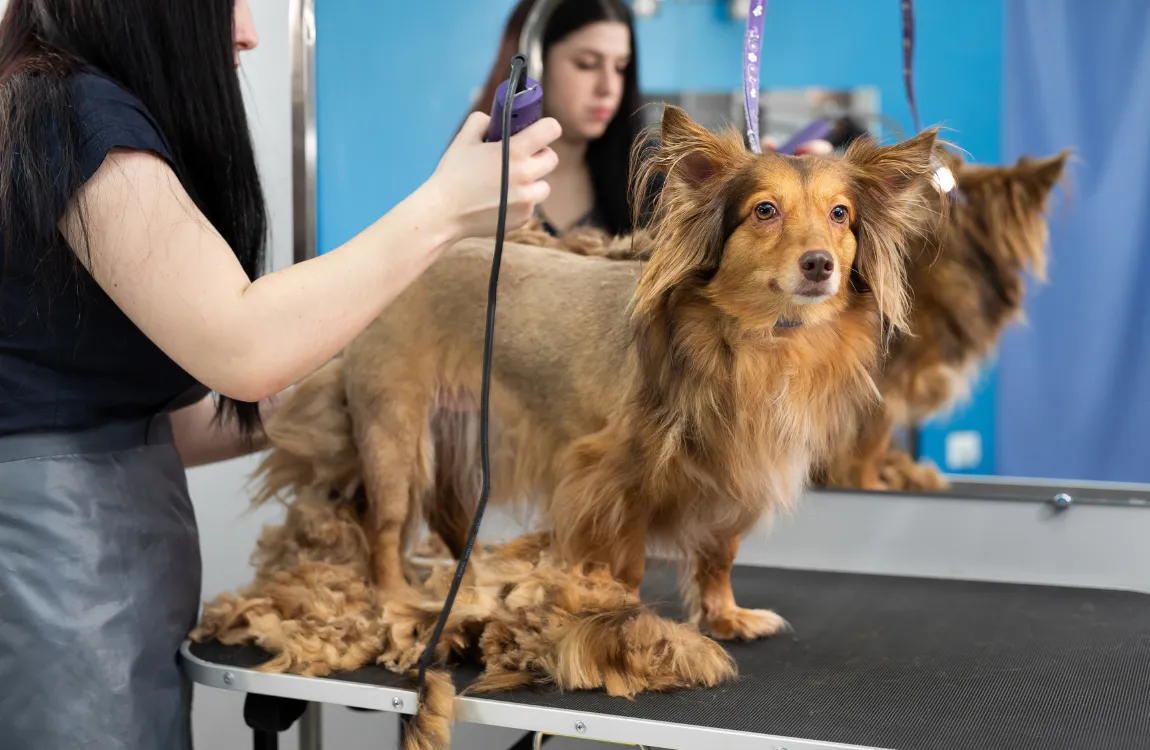Knowing how to shave a dog is a valuable skill for any pet owner looking to maintain their dog’s coat between professional grooming sessions. Beginners will appreciate learning the canine fur clipping essentials laid out in this guide, which aims to enhance your comfort with at-home pet grooming. We emphasize safe dog shaving practices to protect your pet’s skin and deliver a pleasant grooming experience.
Mastering how to shave a dog is more than just running clippers over your pet’s coat; it involves understanding the nuances of dog grooming safety tips and adapting to your dog’s specific needs. This guide reinforces the use of gentle pet shaving techniques and choosing the best dog clippers for a smooth, even trim. As you continue, you will learn how to avoid common mistakes and ensure your dog’s grooming session ends with them looking their best.
Understanding Your Dog’s Coat and Skin
Each breed has unique considerations when learning how to shave a dog. Grasp the type of coat your canine friend has—some have single-layer coats, while others boast double layers which insulate them from various weather conditions. Recognizing this will impact your grooming approach and the tools needed.
Before you begin how to shave a dog, remember that their skin is sensitive and susceptible to irritation. Equip yourself with knowledge on proper skin care post-shave, including the use of mild pet shampoos and skin-soothing lotions that prevent itchiness and keep their coat in pristine condition.
Selecting the Right Tools for Shaving
Equipping yourself with the right shaving tools for dogs is essential for an effective grooming session. Here are the tools and supplies you need:

- Clippers for dog grooming: Invest in a high-quality pair of clippers designed specifically for pets. Look for features like low noise, adjustable speeds, and an ergonomic design to make the task easier for both you and your dog.
- Clipper blades: A variety of blades are important for tackling different coat lengths and types. Ensure you have a selection that includes both skipping and finishing blades, which are vital for achieving a smooth coat finish.
- Cooling spray: This keeps your clippers cool and helps prevent clipper burn on dogs.
- Combs and brushes: These tools help in detangling and preparing the fur before you begin shaving. Combs are essential for lifting the fur, ensuring an even cut, and for dealing with matted fur before shaving your dog.
- Scissors: Precision is key for trimming sensitive areas where clippers might not be safe or practical. A good pair of grooming scissors makes the process more controlled and precise.
- Grooming Table: Although not mandatory, a grooming table can help stabilize your dog and offers you easy access to different parts of their body.
- Rechargeable batteries or a power cord: To ensure that your clippers remain operational throughout the session, especially if you’re using cordless clippers, having backup batteries or a power cord is essential.
Preparing Your Dog for Shaving
Preparing your dog for shaving session starts with making sure your furry friend is calm and comfortable. Take the time to gently brush their coat, easing any tangles and soothing their nerves. Relaxing your pet before grooming is crucial for a smooth, stress-free pet shaving experience.
Next, create a serene atmosphere conducive to at-home pet grooming. A quiet room, away from distractions, allowing you to focus on the task. Ensure you have all your grooming tools at hand, reinforcing a sense of readiness and comfort for both you and your dog.
Step-by-Step Guide How to Shave a Dog
When embarking on the step-by-step guide how to shave a dog at home, patience and careful attention to detail are key to a safe and positive experience. Here are the steps to follow:
Prepare Your Workspace
Choose a well-ventilated, well-lit area where your dog is comfortable and feels safe. Ensure the space is free from clutter to avoid accidents and make it easy for you to move around.

Brush and Comb Your Dog’s Coat
Using a comb or brush, gently work through any mats or tangles in your pet’s fur. This will make the shaving process smoother and prevent unnecessary discomfort for your pet.
Select the Right Clippers and Blades
Choose the appropriate clipper blades for your dog’s coat type and desired trim length. Start with a longer blade and gradually work towards shorter lengths until you achieve your desired result.
Introduce Your Dog to the Clippers
Before you begin shaving, let your pet become accustomed to the sound and vibration of the clippers by turning them on near your dog without actually touching them.
Start Shaving in the Appropriate Direction
Always shave in the direction of hair growth to achieve a smooth and consistent cut. Be sure to use proper technique and avoid pressing too hard, as this can cause discomfort or injury.
Pay Attention to Sensitive Areas
Take extra care when shaving around sensitive areas like the face, ears, and tail. Use scissors if necessary for precision, and take breaks if your dog becomes uncomfortable.
Check for Evenness
As you shave, check for any uneven patches and make adjustments as needed. Be mindful of your dog’s body language and take breaks if they become restless or uncomfortable.
Reward Your Dog
Once the shaving is complete, reward your dog with praise, treats, or playtime to create a positive association with grooming. This will make future sessions more manageable and enjoyable for both.
Clean and Maintain Your Clippers
After use, clean and oil your clippers to keep them in good condition. This will also help prevent clipper burn on dogs, as dull blades can cause irritation.
Monitor Your Dog’s Skin
Keep an eye on your dog’s skin post-grooming to ensure there are no cuts, clipper burns, or other signs of irritation. If you notice any issues, consult a veterinarian for appropriate treatment.
Tips for Different Dog Breeds
Different dog breeds require different grooming techniques and tools. Here are some tips to help you how to shave a dog specific breeds:

- Long-haired breeds: Use a slicker brush for daily brushing and invest in a good quality detangling spray to prevent matting.
- Short-haired breeds: A rubber curry comb is perfect for removing loose fur from short coats.
- Double-coated breeds: Use an undercoat rake to remove loose fur from the undercoat and prevent matting.
- Poodle or Bichon Frise: These breeds require regular professional grooming, as their coats can be challenging to maintain at home. Consider investing in a good pair of thinning shears for in-between trims.
- Small breeds: Use smaller clippers designed specifically for small dogs to ensure safety and precision.
- Large breeds: Use heavy-duty, professional clippers designed for thicker coats to prevent overheating or damage to the clipper blades.
Safety Precautions and Common Mistakes
- Always use grooming tools and products specifically designed for dogs. Human clippers or scissors can be dangerous and cause harm to your pet.
- Keep a close eye on your dog’s body language and take breaks if they show signs of discomfort or distress.
- Avoid leaving any loose fur around the neck area, as it can become caught in collars and cause irritation.
- Do not shave down to the skin. Leave at least 1/4 inch of fur to protect against sunburns and other skin irritations.
- Avoid shaving over moles, warts, or other skin abnormalities as this can cause further irritation or injury.
- Always keep a first aid kit on hand in case of any accidents or injuries during DIY dog grooming.
Aftercare and Maintenance
After grooming your dog, clean and disinfect all tools used during the process. This helps prevent bacteria buildup and keeps your pet safe from potential infections. Additionally, make sure to give your pet a bath after shaving to remove any loose fur and soothe their skin. Learn how to shave a dog effectively while ensuring their hygiene and comfort.

Conclusion
In conclusion, mastering how to shave a dog at home can significantly enhance your pet’s well-being and appearance. Remember, consistent grooming not only keeps your dog’s coat short and manageable but also provides an excellent opportunity to bond with your pet. By remaining attentive to dog grooming safety and using the appropriate dog shaving tools, owners can ensure their four-legged friends stay comfortable and stylish.
Although DIY dog grooming may appear daunting at first, with patience and practice, it becomes a rewarding endeavor. It’s crucial to keep up with regular maintenance and check for signs of skin irritation often, ensuring your companion feels their best. Always wrap up the grooming session with love and treats, reinforcing a positive experience. In this way, how to shave a dog tenderly transitions from a chore to an act of care, culminating in a happy and well-groomed pup.
FAQ’s
How do you shave a dog for beginners?
How to shave a dog for beginners, it is important to first introduce your dog to the clippers and let them become comfortable with the sound and vibration. Use proper technique, always shaving in the direction of hair growth, and take extra care around sensitive areas. Check for evenness as you go and reward your dog after grooming to keep your dog relaxed and happy.
How to shave a dog?
To shave a dog, ensure that you have the right tools, gently introduce your pet to the clippers, shave in the direction of hair growth without pressing too hard, and take care around sensitive areas. Always reward your dog afterwards and monitor their skin for any signs of irritation.
Can I shave my dog myself?
Yes, it is possible to shave your dog yourself. However, it requires proper tools, technique, and patience, especially when learning how to shave a dog without causing them stress or harm. It may be beneficial to seek professional grooming services for certain breeds or if you are unsure about the process. Always prioritize your dog’s safety and well-being when attempting DIY grooming at home.
Is it better to shave a dog wet or dry?
It is generally recommended how to shave a dog when they are dry, as wet fur can become matted and difficult to cut. However, if your dog’s coat is extremely thick or tangled, it may be easier to shave them after a bath when their fur is damp. Just make sure to towel dry them thoroughly before using clippers.
What direction should I shave my dog?
Always shave in the direction of hair growth to avoid causing irritation or discomfort for your dog. This is especially important when shaving sensitive areas, such as the belly, armpits, and groin. It may also be helpful to have a second person hold the skin taut while you shave to prevent nicking or pulling on loose skin.
How often should I groom my dog?
The frequency of grooming your dog will depend on their breed, coat type, and personal preferences. Long-haired breeds may require daily brushing and regular grooming appointments, while short-haired breeds may only need to be groomed every few weeks or as needed.
Can I use a human razor to shave my dog?
No, human razors can be dangerous and cause harm to your pet. Always use designated dog grooming tools to ensure safety and precision when shaving your dog at home.
